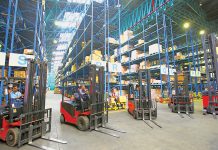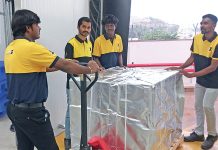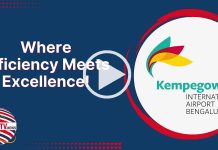The International Air Transport Association (IATA) is focusing on introducing new innovation to improve efficiency in the air cargo industry. Wee Kim Kian, Assistant Director APCS Training and Innovation, IATA, shares their latest plans on virtual training.
Shehara Rizly
Do share with us the latest plans on training undertaken by IATA?
IATA disseminates industry regulations, standards and best practice through training and continually introduces new instructional techniques to enhance the relevance, applicability and retention of knowledge and skills. Research has shown that combining the theory with practical examples in the form of case studies or simulation exercises creates an extremely conducive learning experience for participants. To maintain a high quality in our training, we constantly invest in improving our training programmes and delivery methods.
Will all industry players be part of the new VR training?
We are introducing VR (virtual reality) technology in our training where it brings value. We carefully select the areas of implementation of VR and other technology in order to achieve a positive experience for participants and industry stakeholders. We welcome ideas from all industry stakeholders in order to offer fit-for-purpose and relevant training programmes that serve to address the needs of the industry. We involve our stakeholders and training partners regularly through forums and workshops in order to prioritise the roadmap for our VR training.
Please explain this new methodology and the efficiency of this type of training
Getting access to live operational environments can be an administrative burden with the required security permissions and size of groups. In addition, training in a noisy environment with constantly moving equipment and vehicles under limited time constraints can be challenging and dangerous. Virtual reality technology makes the training safer, more efficient, and more effective. With VR, we can simulate a multitude of scenarios (for example, oil leakage/spillage, FOD (foreign object debris), misplaced equipment, damage on aircraft, speed of aircraft turnaround etc.). Additionally, we can alter the environmental conditions, such as ambient light and weather, to increase the realism of the virtual environment. To aid in instruction, we can record the participant’s actions in the virtual environment in order to replay the actions to highlight knowledge or skill gaps.
The 11th World Cargo Symposium 2017 opened on a remarkable note in Abu Dhabi. The symposium highlighted a thoughtful optimism to accelerate modernisation and focus on delivering high quality service. After several years of virtually no growth, the freight volumes began to grow in the second half of 2016. And the momentum is carrying over into this year with the demand rising nearly seven per cent in January.
Wee Kim Kian, Assistant Director APCS Training and Innovation, IATA: Virtual reality technology makes the training safer, more efficient, and more effective. With VR, we can simulate a multitude of scenarios











